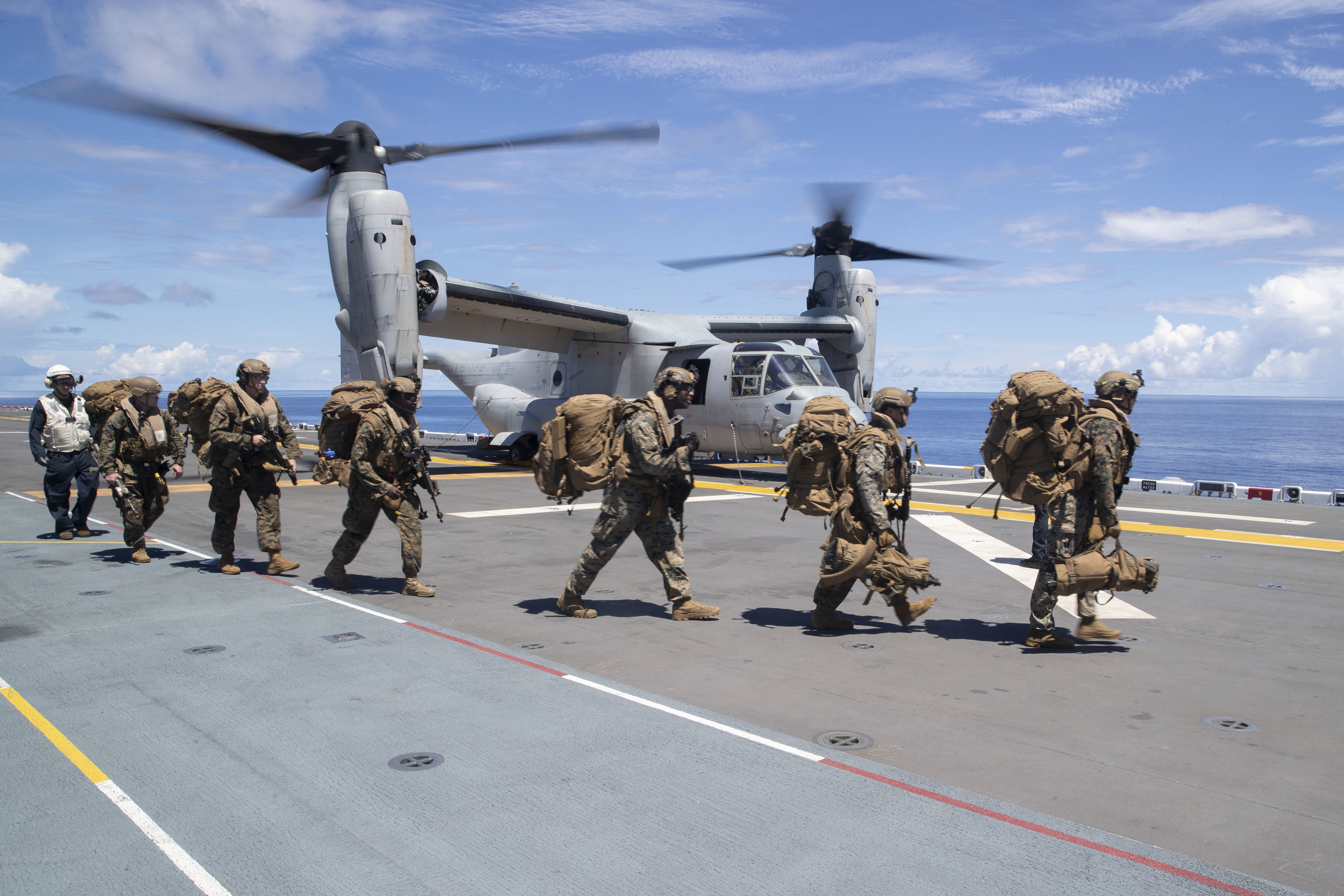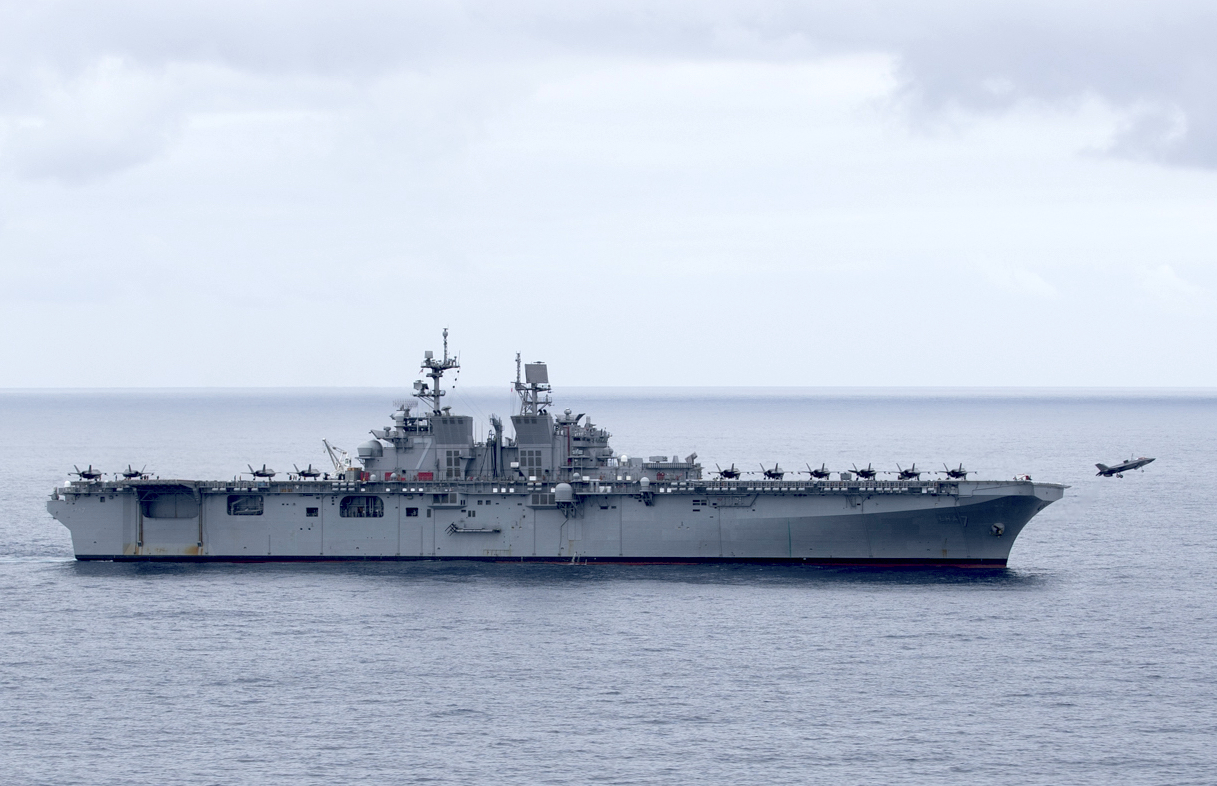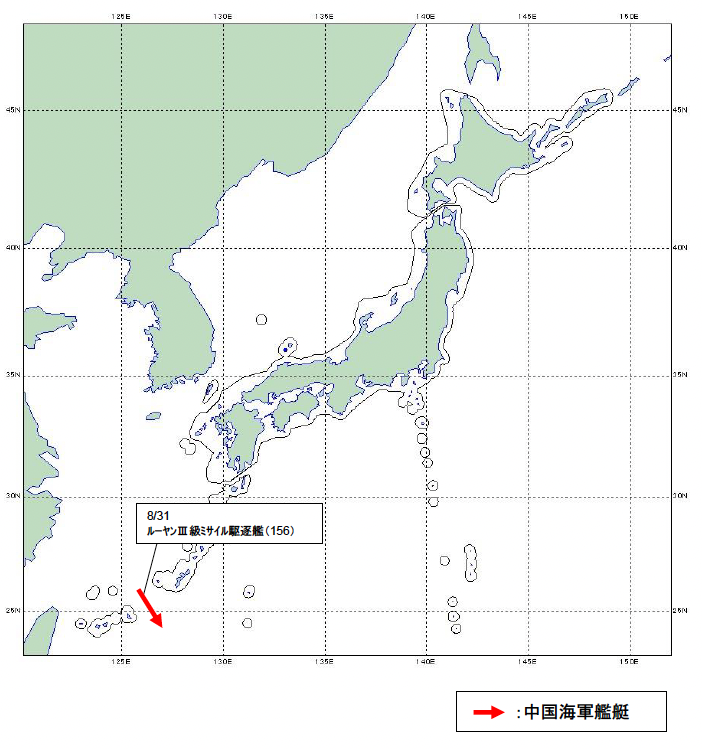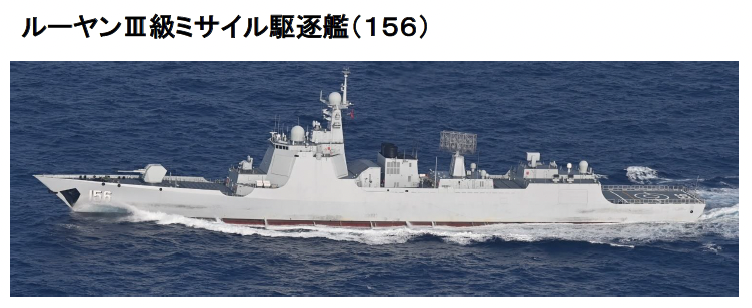
Amphibious assault ship USS Tripoli (LHA-7) is now docked in Singapore for a port call, having arrived at Changi Naval Base on Wednesday following an underway in the South China Sea.
Tripoli‘s stop in Singapore marks its first port visit since it pulled into Naval Base White Beach, Okinawa and embarked the 31st Marine Expeditionary Unit on July 25.
Prior to embarking the 31st MEU, Tripoli had been operating under the “lightning carrier” concept, in which it had more than a dozen F-35Bs aboard during its Pacific deployment. The ship is underway with Marine MV-22B Ospreys and CH-53E Super Stallions for the remainder of its Indo-Pacific deployment. Tripoli took part in the June Valiant Shield exercise, but has transitioned to an amphibious ready force with the Marine Medium Tiltrotor Squadron (VMM) 262 (Reinforced) embarked. Since it began its deployment in May, Tripoli has also had a detachment of MH-60S Knight Hawks embarked from the “Wildcards” of Helicopter Sea Combat Squadron (HSC) 23.
In April, Tripoli’s then commanding officer, Capt. Joel Lang, told USNI News that for its upcoming deployment the big deck could operate either as a lightning carrier or an amphibious assault platform.
While Tripoli was in the South China Sea, closer to Japan, a Chinese People’s Liberation Army Navy (PLAN) surface action group transited the Tsushima Strait on Tuesday into the Sea of Japan. A PLAN intelligence ship and PLAN destroyer separately transited the Miyako Strait into the Pacific on Sunday and Wednesday, according to Japan Ministry of Defense releases.
On Sunday, PLAN Dongdiao-class intelligence ship sailed southeast through the waters between Okinawa and Miyako Island into the Pacific Ocean, according to a Monday news release from the Joint Staff Office (JSO) of the Ministry of Defense. The MoD said that Japan Maritime Self-Defense Force destroyer JS Fuyuzuki (DD-118) and a JMSDF P-3C Orion maritime patrol aircraft of Fleet Air Wing 5 operating from Naha Air Base, Okinawa, monitored the PLAN ship.

On Tuesday, the JSO issued another news release stating that on Monday at 1 p.m., three PLAN ships – a destroyer, frigate and replenishment ship – were sighted 240 kilometers southwest of Tsushima. Images and hull numbers provided identified the ships as destroyer CNS Nanchang (101), frigate CNS Yancheng and replenishment ship CNS Dongpinghu (902). On Tuesday, the three ships sailed northeast through the Tsushima Strait into the Sea of Japan, the release said. JMSDF fast attack crafts JS Otaka (PG-826) and JS Umitaka (PG-828), along with a JMSDF P-1 MPA of Fleet Air Wing 4 operating from Naval Air Facility Atsugi, Honshu, monitored the PLAN ships.
On Wednesday, the JSO said a PLAN destroyer was sighted that morning sailing southeast in an area 93 miles north-northeast of Miyako Island. Imagery and hull number provided in the news release identified the destroyer as CNS Zibo (156), which then subsequently sailed southeast through the Miyako Strait into the Pacific Ocean. The PLAN ship was also monitored by a JMSDF P-3C Orion MPA of Fleet Air Wing 5.
Meanwhile, in Guam, the Royal Australian Navy, Royal Canadian Navy, the JMSDF, the Republic of Korea Navy and the United States Navy concluded exercise Pacific Vanguard 2022 on Monday. The exercise took place from Aug. 21 until Aug. 29, according to a JMSDF news release.
A U.S. 7th Fleet release said the exercise was “designed to provide training that emphasizes integrated task group maritime training and maneuver in a challenging exercise environment. It allows the U.S. and its allies to be equipped and ready to respond to crises and contingencies in a changing Indo-Pacific.”
 Rear Adm. Toshiyuki Hirata, the commander of the JMSDF Indo-Pacific Deployment 2022 (IPD22) and commander of Japanese forces in the exercise said “Pacific Vanguard 2022 is a high-end exercise to operate together in high threat, complex situations in order to maintain stability and freedom of access to the oceans, and global commons. I hope this exercise will further strengthen the strong partnership among the participating countries and contribute to the peace and stability of the Indo-Pacific region in order to realize a free and Open Indo-Pacific.”
Rear Adm. Toshiyuki Hirata, the commander of the JMSDF Indo-Pacific Deployment 2022 (IPD22) and commander of Japanese forces in the exercise said “Pacific Vanguard 2022 is a high-end exercise to operate together in high threat, complex situations in order to maintain stability and freedom of access to the oceans, and global commons. I hope this exercise will further strengthen the strong partnership among the participating countries and contribute to the peace and stability of the Indo-Pacific region in order to realize a free and Open Indo-Pacific.”
Japanese forces taking part in the exercise included helicopter destroyer JS Izumo (DDH-183), destroyer JS Takanami (DD-110), a submarine, a P-1 MPA, a UP-3D Electronic Intelligence training aircraft, and elements of the Amphibious Rapid Deployment Brigade (ARDB) of the Japanese Ground Self-Defense Force (JGSDF).
ARDB members, together with their U.S Marines counterparts, directed naval gunfire support from ships in the exercise, according to a JGSDF news release. U.S units in the exercise included destroyer USS Barry (DDG-52), dry cargo and ammunition ship USNS Alan Shepard (T-AKE-3), an attack submarine, the 5th Air Naval Gun Liaison Company (ANGLICO) of 3rd Marine Expeditionary Force (MEF), a P-8 from the “Mad Foxes” of Patrol Squadron (VP) 5 and EA-18Gs from the “Start Warriors” of Electronic Attack Squadron (VAQ) 209.
Destroyer HMAS Sydney (DDG42), frigate HMAS Perth (FFH157) and replenishment ship HMAS Supply (A195), participated for the RAN, while Canadian participation included frigate HMCS Vancouver (FFH331). The ROKN participated with destroyers ROKS Munmu the Great (DDH-976) and ROKS Sejong the Great (DDG-991).

Japan’s Izumo and Takanami form the first surface unit of the JMSDF’s IPD22 deployment, with the submarine and aircraft in Pacific Vanguard forming independent sub-units of IPD22 that would participate in some of the engagements involving the two surface units. The second surface unit is destroyer JS Kirisame (DD-104), which is completed a port visit on Tuesday in Noumea, French New Caledonia. Earlier, Kirisame conducted exercise Oguri-Verny 22-5 near French New Caledonia from Aug. 25-26 with French Navy offshore patrol vessel FS D’Entrecasteaux (A621) and a French Air Force Falcon 200.
Izumo, Takanami, Supply, Vancouver, Munmu the Great and Sejong the Great all took part in the Rim of the Pacific 2022 exercise, which concluded on Aug. 4. Other ships from the Indo-Pacific region are now home or headed home from RIMPAC. Philippine Navy frigate BRP Antonio Luna (FF151) arrived in Manila on Thursday, while Indonesian Navy frigate KRI I Gusti Ngurah Rai (332) arrived home on Aug. 22. Royal Malaysian Navy corvette KD Lekir (FSG26) arrived at RMN Kota Kinabalu, East Malaysia on Friday, but will leave for her homeport at RMN Lumut Naval Base. Meanwhile, Singapore frigate RSS Intrepid (69) is on its way home after departing Japan on Saturday.





